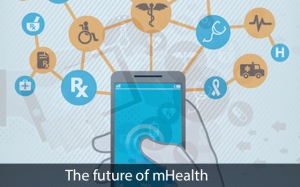A number of technology entrepreneurs want to make use of the population of smart phones through working the ways to healthcare and placing a claim into the mHealth industry. There are some difficulties these innovators should deal with to develop a broadly used and sustainable mHealth application. In the mobile app market, success would mean that a mobile app could provide business worth to their users. This could can be found in the type of new income, with cutting expenses or enhancing operational performance. Once checking out the healthcare space, understanding success is much more complicated than that. To ensure that an mHealth app to be noticed as worthwhile, it should reach at least one of the below stated works: develop patient outcomes, minimize healthcare costs, engage patients or enhance care ability. Primary elements that needs to be existing in order to actually evaluate the success with an mHealth application.

In this era of smartphone virtual assistants and effective computer systems that may offer analysis recommendations according to lab outcomes and |health charts, mHealth needs to be capable of incorporate with techniques that may offer real-time evidence-based reactions to patients’ inquires. It starts the possibility for an smart and interactive application which helps patients and providers. An application such as this can make guide to anyone with low blood sugar or cause an alert looking at a patient’s unstable important signs to a nearby primary care doctor or medical center. Regarding mHealth, there are lots of different kinds of applications available. There are products which target fitness monitoring and others for diabetes as well as dialysis care. If a company concentrates on specific area of expertise, they can provide the proper solution to the difficulties experienced by patients with specified circumstances. This narrow focus could be of support by updating patients aided by the latest scientific findings associated on their state.
Making a mobile application which is simple to use for any age and grades of technological capability is among the secrets to an effective mHealth move. Mobile applications will probably need patients to often modify all of them with health facts and communicate with them while in necessity of care input. To make certain broad adoption, it is important that patients get the application easy to use. One patient, one chart is a very common saying for medical centers marketing their unified EHR program which provides their patients one health report in their system of services. Actually, an mHealth application cannot need to connect with just one medical center program. It would possibly remain vendor-neutral and provide integration abilities which EHR vendors could leverage in order to use the application. This can be achieved through following the latest health data exchange criteria found in the healthcare field. Best claim that any mHealth application could have is that it offers stats measuring development within patient results. When placing the patients’ wellness first, an application would assure patients that its focus is with the right area. It also should show that it could give financial benefit to payers, medical centers or patients.
Lot of mHealth applications could study and process sensor readings through the patient. Which data can be subject to switch amongst medical centers and different care facilities. Any upcoming mHealth step will most likely need to deal with interoperability issues by making sure patient information could be shared through the app. There are also examples of mHealth success from all over the world. It has moved lots of healthcare professionals to constantly evaluate their mHealth way to make sure they provide the advantages of particular applications to the patients. That is why, medical centers, patients and wellness plan providers are checking the market industry, looking for the application stores and speaking with vendors to recognize which mHealth applications can help develop care and outcomes.
You can get in touch with a mobile health app development company who can help you develop healthcare apps that are stable, scalable and secure.
We provide healthcare mobile app development services. If you would like to discuss with one of our developer about your projects or would like to hire iphone medical app developers for your development needs, please contact us Mindfire Solutions.








